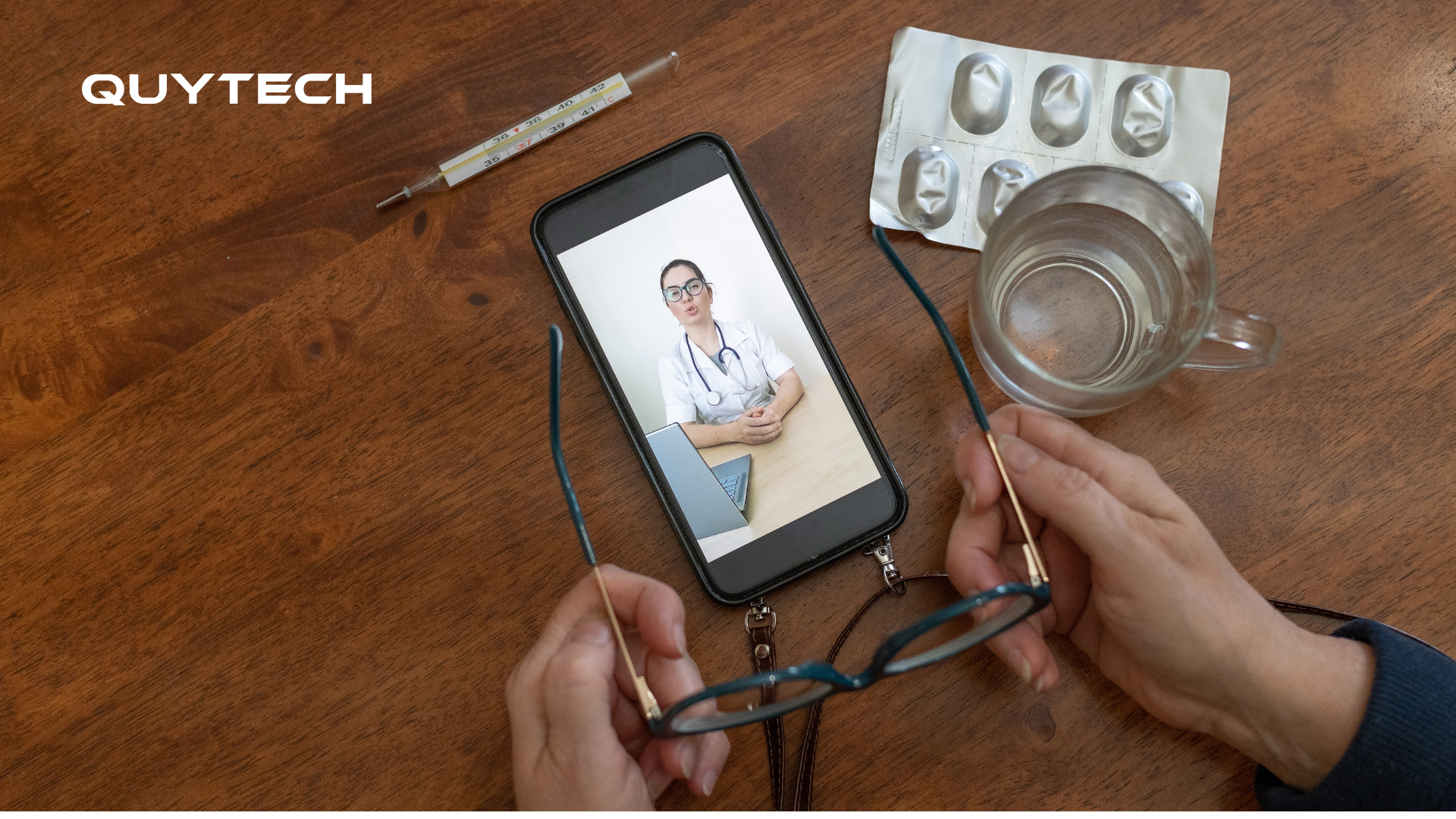
The digital revolution has transformed many sectors, and healthcare is no exception. Among the most significant advancements in healthcare technology is the development of telemedicine apps, which connect patients with doctors remotely. These apps have become especially crucial in ensuring continuous medical care while reducing the need for physical visits to healthcare facilities.
This article explores the development of telemedicine apps, their benefits, and key considerations for a healthcare app development company.
The Rise of Telemedicine
Telemedicine leverages digital technology to provide clinical services remotely. This approach has gained significant traction due to several factors:
- Accessibility: Telemedicine apps enable patients in remote or underserved areas to access medical care.
- Convenience: Patients can consult with doctors from the comfort of their homes, eliminating travel time and reducing waiting periods.
- Cost-Effectiveness: Telemedicine reduces healthcare costs by minimizing the need for in-person visits and optimizing resource use.
- Pandemic Response: The COVID-19 pandemic highlighted the need for remote healthcare solutions, significantly accelerating the adoption of telemedicine.
Key Features of Telemedicine Apps
Successful telemedicine apps incorporate a range of features to ensure they meet both patient and provider needs:
- Video Consultations: Real-time video conferencing allows for face-to-face interactions between patients and healthcare providers.
- Secure Messaging: Encrypted messaging enables secure communication and the sharing of medical information and test results.
- Appointment Scheduling: Integrated scheduling tools allow patients to book, reschedule, or cancel appointments easily.
- E-Prescriptions: Doctors can prescribe medications electronically, which can be sent directly to the patient’s preferred pharmacy.
- Health Records: Access to electronic health records (EHR) provides comprehensive medical history and data for informed decision-making.
- Payment Integration: Secure payment gateways facilitate easy and safe transactions for telemedicine services.
- Symptom Checkers: AI-powered symptom checkers help patients understand their symptoms and decide whether to seek medical advice.
- Multi-Language Support: Catering to a diverse user base by offering multiple language options improves accessibility and usability.
Benefits of Telemedicine Apps
Telemedicine apps offer numerous advantages to patients, healthcare providers, and the broader healthcare system:
- Enhanced Access to Care: Patients in rural or underserved areas can access quality healthcare services without the need to travel long distances.
- Improved Patient Engagement: Convenient access to healthcare services encourages patients to seek medical advice and follow treatment plans.
- Continuity of Care: Telemedicine ensures ongoing care for chronic conditions and post-operative follow-ups without frequent hospital visits.
- Reduced Healthcare Costs: By reducing the need for physical infrastructure and minimizing hospital admissions, telemedicine can lead to significant cost savings.
- Better Health Outcomes: Timely access to medical advice and continuous monitoring improve overall health outcomes and reduce complications.
Development Considerations for Telemedicine Apps
Developing a telemedicine app involves several critical considerations to ensure it meets the needs of users and complies with regulatory standards:
- User-Centered Design: The app should be intuitive and easy to navigate, ensuring a seamless experience for patients and healthcare providers.
- Regulatory Compliance: Compliance with regulations such as HIPAA in the United States and GDPR in Europe is essential to protect patient data and privacy.
- Data Security: Implementing robust security measures, including encryption, secure login, and regular security audits, is crucial to safeguard sensitive health information.
- Integration Capabilities: The app should integrate with existing EHR systems, pharmacies, and other healthcare services to provide comprehensive care.
- Scalability: Designing the app to handle a growing user base and increasing data volume ensures long-term viability.
- Interoperability: Ensuring the app can work seamlessly with other healthcare systems and technologies enhances its functionality and user experience.
- Continuous Improvement: Regular updates based on user feedback and technological advancements are essential to keep the app relevant and effective.
Case Studies: Successful Telemedicine Apps
Several healthcare app development companies have successfully created telemedicine apps that have transformed patient care:
- Teladoc Health: Teladoc offers a comprehensive telemedicine platform that provides video consultations, e-prescriptions, and integrated health records. It is widely used in the United States and has expanded globally.
- Amwell: Amwell’s telehealth platform connects patients with healthcare providers for various services, including urgent care, behavioral health, and chronic disease management. The app integrates with major EHR systems and offers secure video consultations.
- Doctor on Demand: This telemedicine app provides 24/7 access to board-certified doctors and therapists. It includes features such as video visits, secure messaging, and prescription management, catering to a broad range of medical needs.
Future Trends in Telemedicine Apps
The future of telemedicine apps looks promising, with several trends set to shape the industry:
- AI and Machine Learning: AI-powered features can enhance diagnostic accuracy, provide personalized treatment recommendations, and improve patient engagement through chatbots and virtual assistants.
- Wearable Integration: Integration with wearable devices allows for real-time health monitoring, providing valuable data for remote consultations and ongoing care.
- Blockchain Technology: Blockchain can enhance data security and ensure the integrity of patient records, addressing some of the critical challenges in telemedicine.
- Augmented Reality (AR) and Virtual Reality (VR): AR and VR technologies can provide immersive experiences for remote consultations, medical training, and patient education.
- Global Expansion: As telemedicine continues to prove its value, we can expect broader adoption and implementation across different regions, improving access to healthcare worldwide.
Conclusion
Telemedicine apps are revolutionizing the healthcare industry by providing convenient, cost-effective, and accessible healthcare services. For healthcare app development companies, creating successful telemedicine apps involves understanding user needs, ensuring regulatory compliance, and focusing on data security and integration.
As technology continues to evolve, the potential for innovation in telemedicine is vast, promising even more effective and user-friendly solutions that connect patients with doctors remotely.
Partnering with an experienced healthcare software development company can ensure that your telemedicine app not only meets regulatory standards but also delivers innovative features that make a real difference in patients’ lives.
